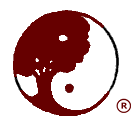

Following the Acu-Point
by Steve Schumacher,
Authorized JSD Teacher, Louisville, KY
I think that each acu-point is, in essence, a tiny hologram of our internal world and its relationship to the external world. If this is so, and if health and well-being is a balance between the internal world (which we carry inside) and the external world (with which we must interact), then we can see how useful the acu-points can be in maintaining balance, or homeostasis.
Through the years, Iona has produced an amazing amount of work in Jin Shin Do®. She has developed and given us numerous release patterns for Strange Flow, meridian and segmental release. She has said that these patterns are only examples of effective local-distal point combinations. She has emphasized that we need to adapt the choice of both local and distal points to each individual's changing needs.
LOCAL POINT: a point in a tense or problem area
DISTAL POINT: helps the local point to release (because of energic or functional relationships)
We can allow the local points that we use in our patterns to "speak" to us, and then "follow" their direction to related distal points. We know that acu-points can affect both our body and psyche. The very name of our work ("The Way of the Compassionate Spirit") also speaks to its effect on our spirit. When you contact a local point that needs to be addressed, "feel" into the point and "listen" to the story it tells.
Is this story about the person's psyche or body? Or, does it seem to be a mixture of body and psyche? If body, is it about muscle, fascia, bone, viscera? If psyche, is there fear, grief, anger, joy? If appropriate, speak of the emotion you sense; if it is right, the local point may immediately begin to release. This is a confirmation that what you are sensing is correct.
Next, see if you can get a sense of a distal point which might help release the tense local point. For example, if the local point is #20, is the need just to release the trapezius musculature, or also to move into the abdomen and release GI tract distress?

To release the trapezius, #13 (GB 34) may be a useful distal, because it is a special muscle release point. It also might be useful to hold another local point, such as #22 (GB 20), which also touches the trapezius. To help the energy move out of the shoulders and into the GI tract, "C" (CV 12) is useful, as it will often release a pyloric spasm.
If it is the psyche which the point is effecting, you may get a sense of a warmth rising from the point. You may sense the point moving into a limb, such as the leg on the same side. Let yourself sense which part of the leg wants to be held. For example, if it seems to be the knee, sense which part of the knee is tense. Is it around #8 (SP 9), #40 (ST 36), #13 (GB 34) or #31 (B 54/40)? It is sometimes said that the further a distal point is from the local point, the deeper it can affect the local point. If you have found a useful distal point, it will start things happening at the local point soon often within 15-20 seconds.
Working with Jin Shin Do® is a dynamic process. The more we
are able to focus as we work, and sense into what the points have to tell us, the more
completely we can understand our clients' needs.
All rights reserved.